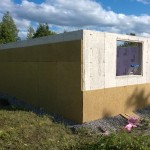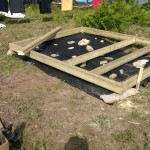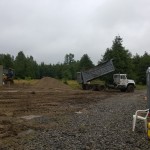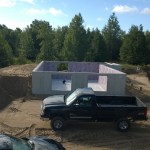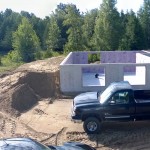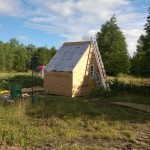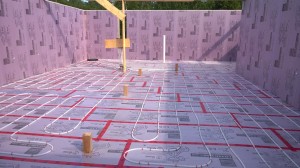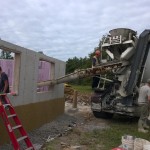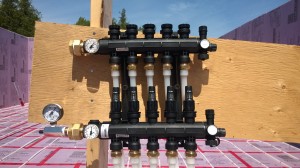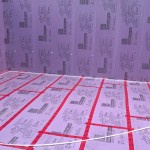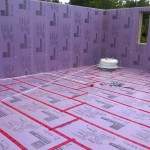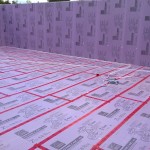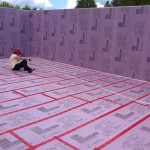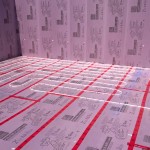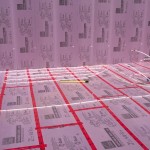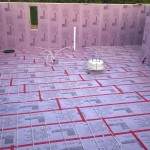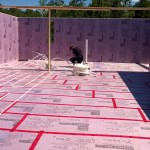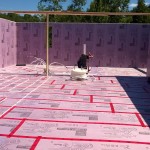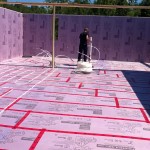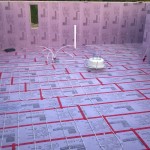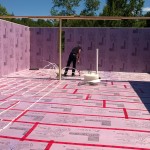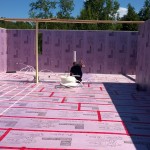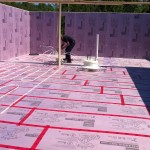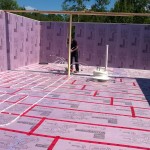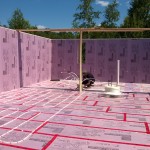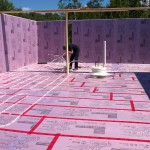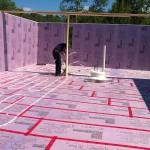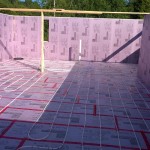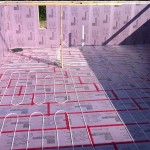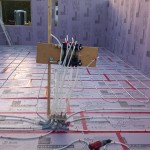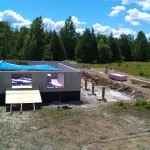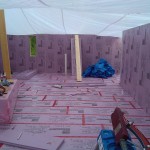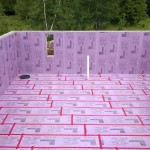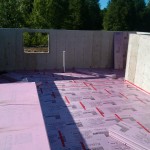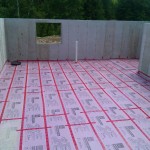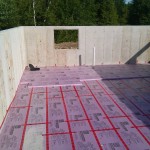To power our off-grid system, we will rely on solar panels to recharge our battery bank, and, when there hasn’t been enough sun to fully top up the batteries, we have a backup generator that we will use to provide additional recharging as needed.
We can also utilize our inverters “Load Support” feature, whereby if we want to run more electrical devices than our inverter can power alone (6000W), the inverter can pair it’s output with the output from the generator (7000W) to provide power to provide a total system power of 13kW – no doubt this will take care of anything we might wish to run!
Our generator is a Honda EU7000is, which is an inverter type generator that produces a 60Hz pure sine wave electrical output at 120/240VAC, just like the electrical grid. Right now we use this generator to power the RV (TV/Satellite PVR, Microwave) and my tools (like my table saw, compressor, etc), but when we get around to wiring up the electrical, we will hardware this into our inverter with an automatic generator start circuit so the inverter can bring the generator online as necessary to recharge the batteries, etc.
For our solar array, we are going to start with 26 panels – these are Canadian Solar 250W panels which are currently selling for around 79cents/watt. This will give us an initial array size of 6500Watts. We’ll wire this up, for two strings of 13 panels, each string will run to it’s own 80Amp charge controller (connected to the inverter), for a total charging capacity of 160Amps (this is a maximum which will probably not often be seen). We will start with these panels and see how we get on – if we find we aren’t generating enough power (ie. generator is running too much), we can always add more panels.
Our goal is to be able to support a power draw of around 10kWh/day, or 300kWh/month (a third of our power use in the city!) – so if we look back at the PVWatts tool I previously mentioned, putting in our array size of 6500W with a derate of 0.52 (for off-grid calcs), and a fixed array tilt of 60 degrees (best winter angle, still good enough in the summer), we can see that we are pretty good, except of course for November with it’s particularly meager solar insolation.
What I also find interesting is that March and February are the two highest solar producing months in the Ottawa area. I would have initially thought that June and July would hold that position.
Anyway that’s some information about our solar panels and our generator setup, if you have any questions feel free to post them as comments and we’ll be sure to respond!

